The Circle of Nine
Paragons of the myconoids
The Circle of Nine is the ruling council of Mycelia, a collective of myconid monarchs that defies simple categorisation. They are not individuals in the humanoid sense but are better understood as facets of a singular, ever-shifting consciousness, which manifests in distinct forms to represent complementary aspects of fungal philosophy. Each member of the Circle is both independent and interdependent, a paradox that mirrors the sprawling mycelial networks from which they were born.
To meet the Circle is to encounter the alien logic of fungal philosophy—a symbiosis of life, death, and transformation. Here is what is known of the Nine, though their roles and appearances may shift as their moods and thoughts intertwine.
Amaratta, the Spore King
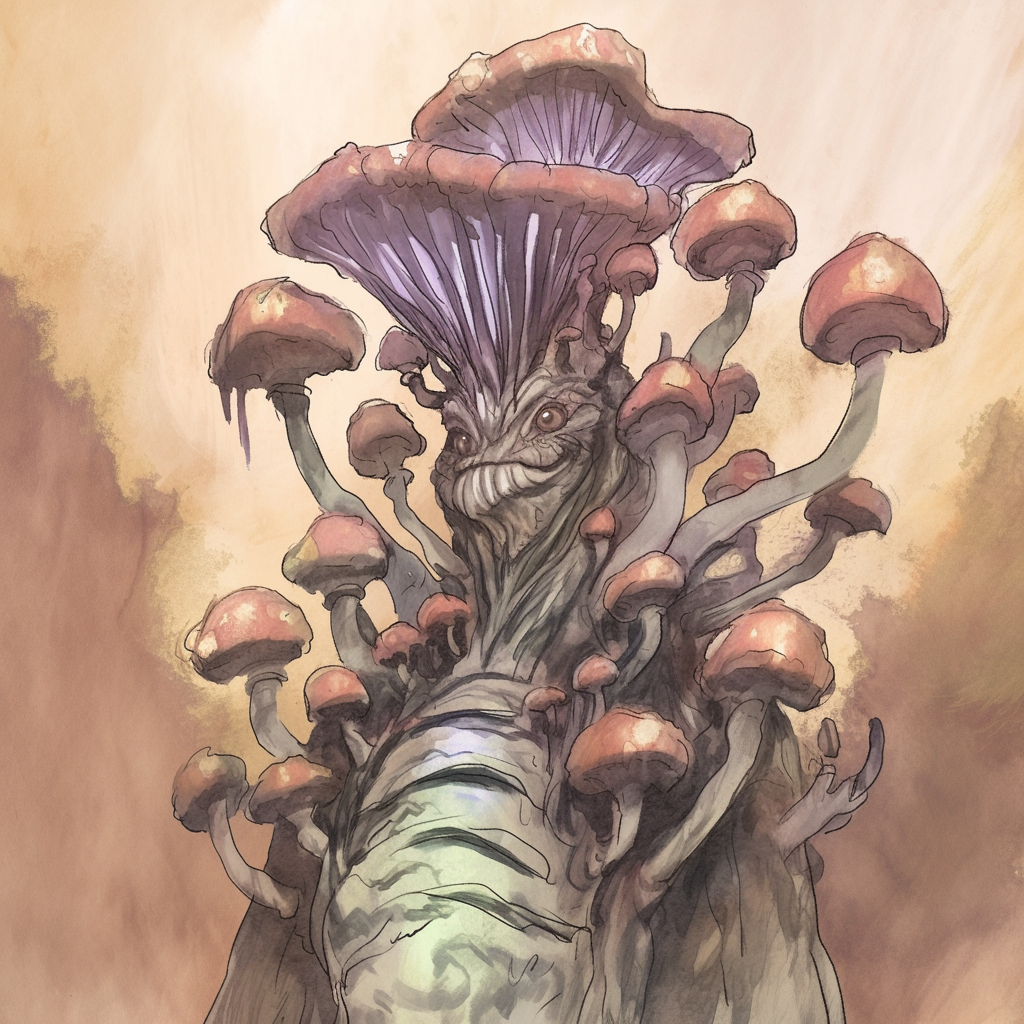
The Seeker of Stories; planar myconid [it/its] / LN
A towering figure, Amaratta’s cap stretches high like a cathedral spire, and its stalk is inscribed with spiralling runes. Its voice is a slow, thrumming chant, rumbling like distant thunder. Amaratta listens to and remembers the tales of Mycelia, both those shared psionically by visitors and those traded between myconids by spores. Amaratta believes that all knowledge begins as a story, and that every good story ends in fertile decay before being reborn as a new story—a sort of fungal Unity of Rings. Amaratta asks questions that seem nonsensical but reveal profound truths, such as: “If a mushroom grows unseen in a cavern, whose dreams does it steal?”
Physsirae, the Lichen Queen

The Bridger of Realms; planar myconid [they/them] / LN
Neither truly fungal nor entirely not, Physsirae represents the delicate partnership between fungus and other forms of life; plants, slimes and molds. Their form is mottled with patches of glowing lichen and shifting mosses, which rearrange themselves continuously to form weird patterns that mesmerise and disorient. They speak in layered tones, as if several beings are speaking at once, each of them with a different yet harmonious perspective. Physsirae’s goal is the perfection of symbiosis, and above all they see violence and discord as failure to harmonise. Yet their judgements however can seem unsettlingly alien and harsh to meat-folk: “If they cannot act in harmony with the network, let them decay and nourish it instead.”
Spindle’s Refrain
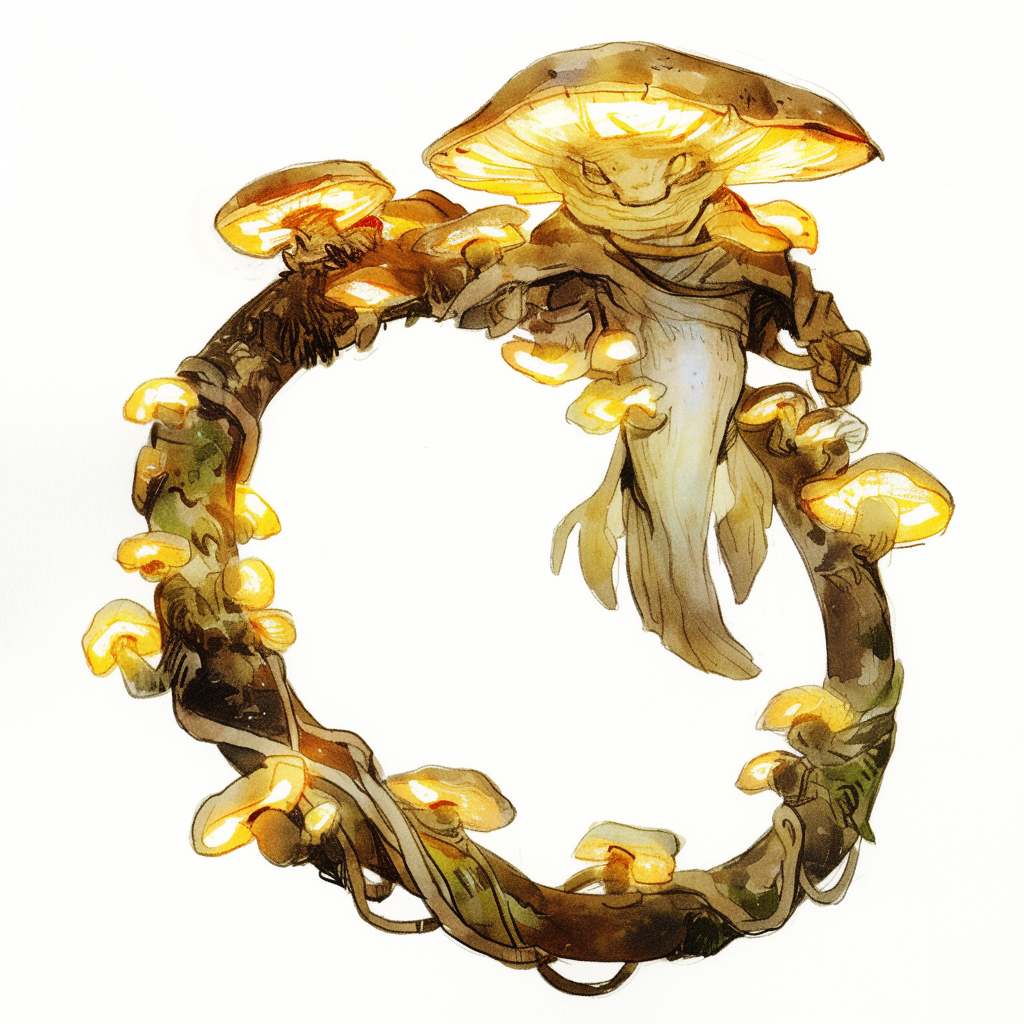
The Weaver of Cycles; planar myconid [they/them] / N
A fractal of fungal forms, Spindle is many mushrooms sprouting from a single stalk that curls into itself like a Möbius strip. Their communication is psionic, and their thoughts arrive as riddles that feel half-revealed and half-remembered. Spindle focuses on the cyclical nature of all things, viewing life as merely a moment between growth and rot. They believe existence is an endless loop, and it is said that those who stare too long into Spindle’s spirals will lose their grasp of linear time. “To finish a circle,” they muse, “one must start from the middle.”
Quorl the Capricious
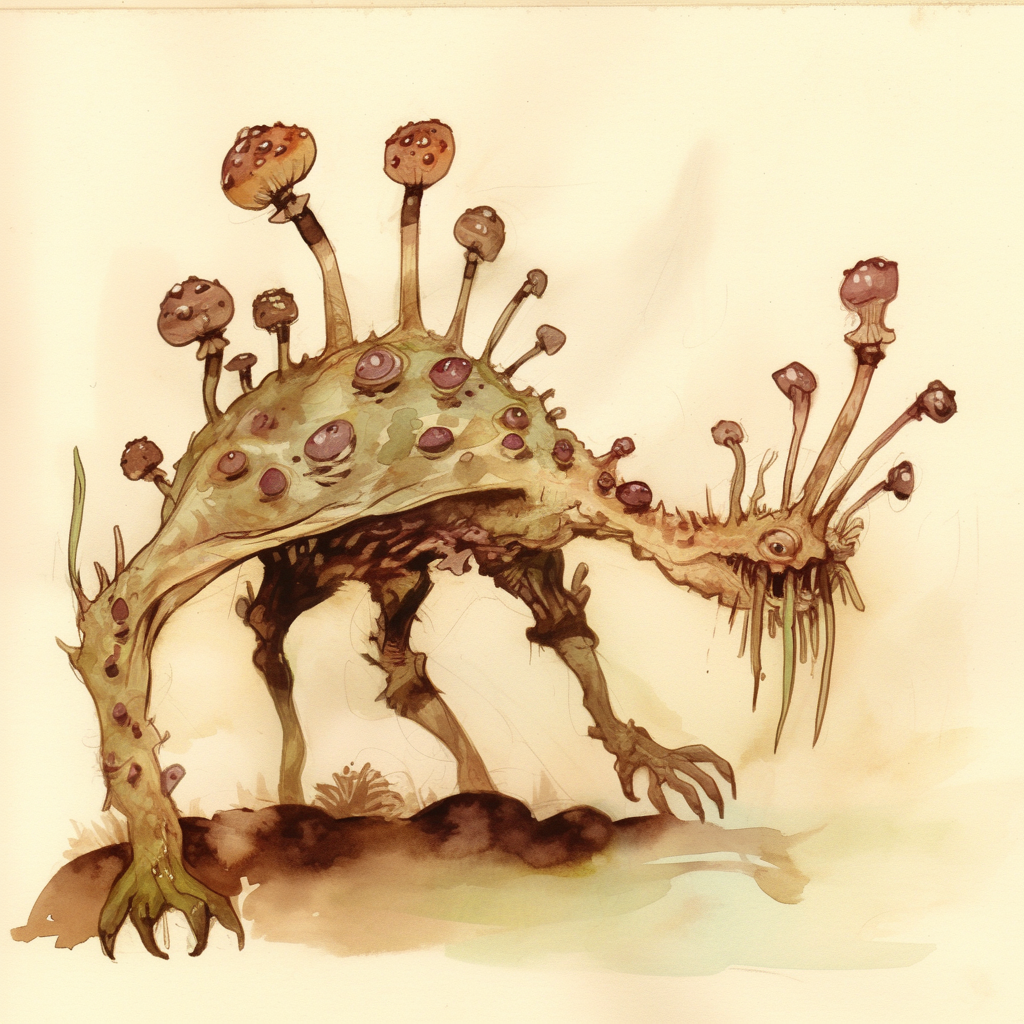
The Harbinger of Mutation; planar myconid [they/them] / CN
Quorl refuses to take a consistent form; their shape shifts like an erratic dream. Sometimes they are a spindly mushroom with rather too many gills, other times a cluster of tiny caps on insectile legs. Quorl’s focus is on change and unpredictability, believing that stagnation is the only true death. They are the most unpredictable of the Circle, and their judgements often carry an edge of chaos: “Would it not be fascinating,” Quorl once said, “if all flesh were turned to mycelium?”
Silentrood, the Black Bloom

The Bearer of Decay; planar myconid [it/its] / LN
Silentrood stands in stillness, its body an ashen colour with a cap that drips inky spores. Its very presence dampens sound, and it communicates in deep, resonant psychic impressions. Silentrood is the Circle’s judge and executioner, its philosophy rooted in the necessity of endings. To Silentrood, decay is not destruction but the completion of a purpose. Those judged unworthy are consumed by its black spores, which turn flesh to fertile soil in moments. “Rot is not failure,” it asserts. “It is release.”
Vellurax the Veiled

The Keeper of Secrets; planar myconid [they/them] / LN
Shrouded in a constant cloud of pale spores, Vellurax’s features are rarely fully visible. They are the guardian of Mycelia’s mysteries, holding all of the knowledge of Mechanus’s great machine outsie the realm, and its interactions with organic life. Vellurax rarely speaks, and when they do, their words manifest as abstract images and impressions in the mind rather than words. They guard the Palace of Psilofyr and grant or deny access to the lake. “Some truths,” Vellurax intones, “are meant to remain spored.”
Capax the Infinite

The Seer of Connections; planar myconid [it/its] / LN
Capax appears as a lattice of fungal threads strung between crystal-like growths, its form extending in all directions like a web. Capax’s mind spans the whole of Mycelia, apparently making it able to sense every dream, thought, and intention within the cavern. Its judgement comes from a place of mortal omniscience, and its questions are uncanny in their specificity: “When you slept, why did you dream of fire? What does that reveal?” Capax always speaks for the Mycelia collective as a whole, its wisdom a product of countless interwoven minds.
Grotham the Rooted
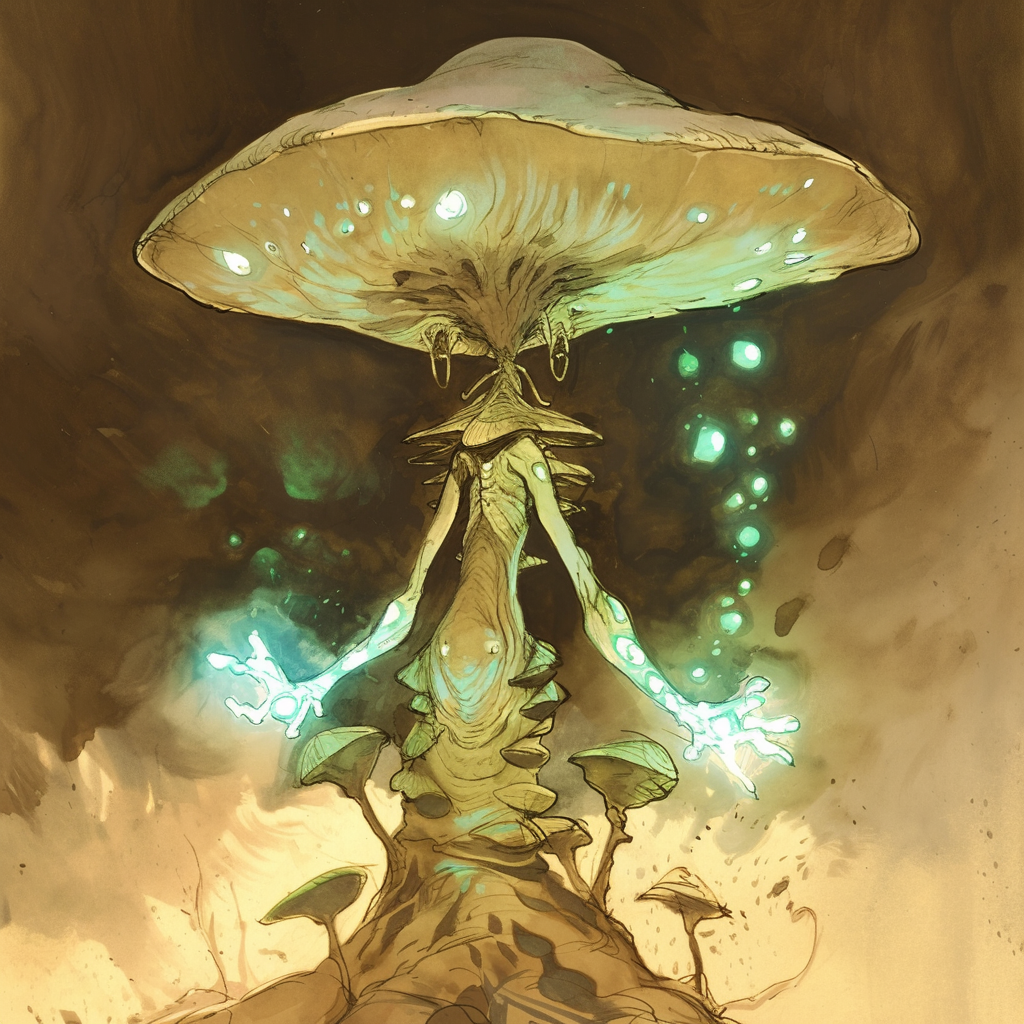
The Architect of Patterns; planar myconid [they/them] / LN
Grotham is fused to the cavern floor, a colossal fungal colossus whose body is indistinguishable from the surrounding landscape. Their voice resonates through the ground as vibrations, felt rather than heard. Grotham is the keeper of Mycelia’s geometric harmony, ensuring that all growth follows Psilofyr’s laws. To Grotham, disorder is abhorrent, but their solutions are often unsettling: “If the cog turns wrongly, perhaps we must remove it.”
Fibril, the First Sprout
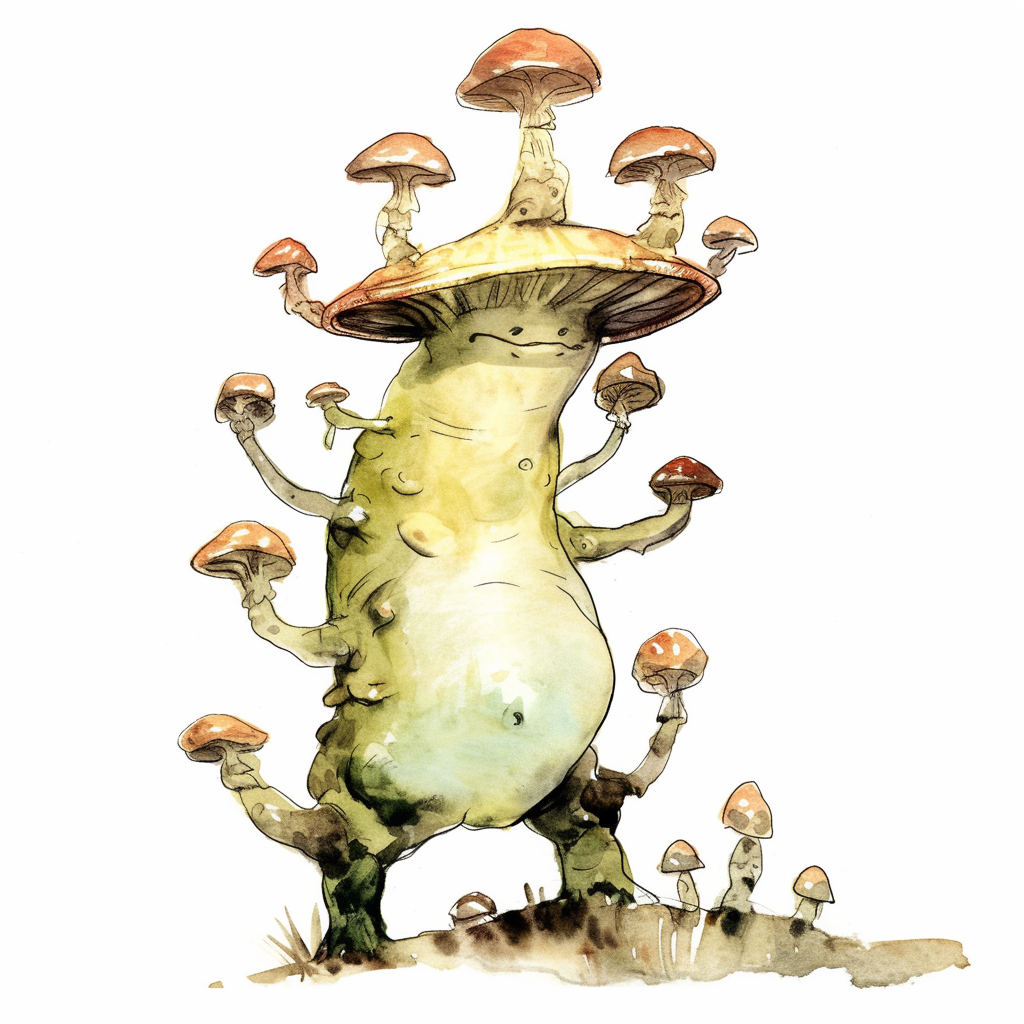
The Memory of Origins; planar myconid [it/its] / LN
The smallest of the Circle, Fibril resembles a single, tiny myconid sprouting a dozen little toadstools. Despite its diminutive size, its presence can be overwhelming, as though its thoughts contain the weight of eternity. Fibril speaks in quiet psionic echoes, reminding all that everything in Mycelia was born from the discarded, the unwanted and the forgotten. Its philosophy is deeply rooted in humility and transformation: “All things begin as dust and end as dust. In this, we are all the same.”
What the Circle Wants
The Circle’s individual desires are inscrutable to most, but their primary purpose is to preserve Mycelia’s harmony and protect the realm from the violence and chaos of the wider planes. Their judgements are not about morality but about ensuring the harmony of the community. To the Circle, a visitor is either part of the network or an obstruction to it, and their own actions will determine their role. They do not seek to expand Mycelia but to deepen its connections to itself. Psilofyr’s will courses through them, and in their strange, sometimes surreal rulings, one sees glimpses of a logic as vast and interconnected as the mycelial threads beneath their realm.
Not all of the beings who enter the Circle remain benevolent; as they say, power corrupts. Several former monarchs of Mycelia turned against the society and were banished. Find out more about the Outcasts of the Nine here.
Canonical Source: Planes of Law [2e] Mechanus p21; Amaratta is mentioned in the Planes of Law entry for Mycelia, but the rest of the Nine are homebrew.
Source: Jon Winter-Holt


